
16.12.2022
Mundial by Enrique Flores at Sagrada Mercancía
One of the most outstanding qualities of the artist Enrique Flores, is his facility to turn personal the artistic issues with which he commits himself. The unlimited play of his taste for popular culture has made him the author of a constant production of avatars and multiple figurations of what an artist can be. Moreover, and perhaps exceptionally, he has become the author of that looping distance that runs through the cycle of transformation by which someone—himself—becomes an artist. The vital path of what an artist can do and be even when they are not being an artist, and vice versa—as soccer player Iván Zamorano would say. It is that distance that becomes a matter of the representation of processes in each of Enrique’s artistic projects. That back-and-forth transit—in the distance—is what directs him and leads him to translate at his own whim the tastes and passions he has been collecting in his life, the same ones that today come to a halt in this new exhibition.
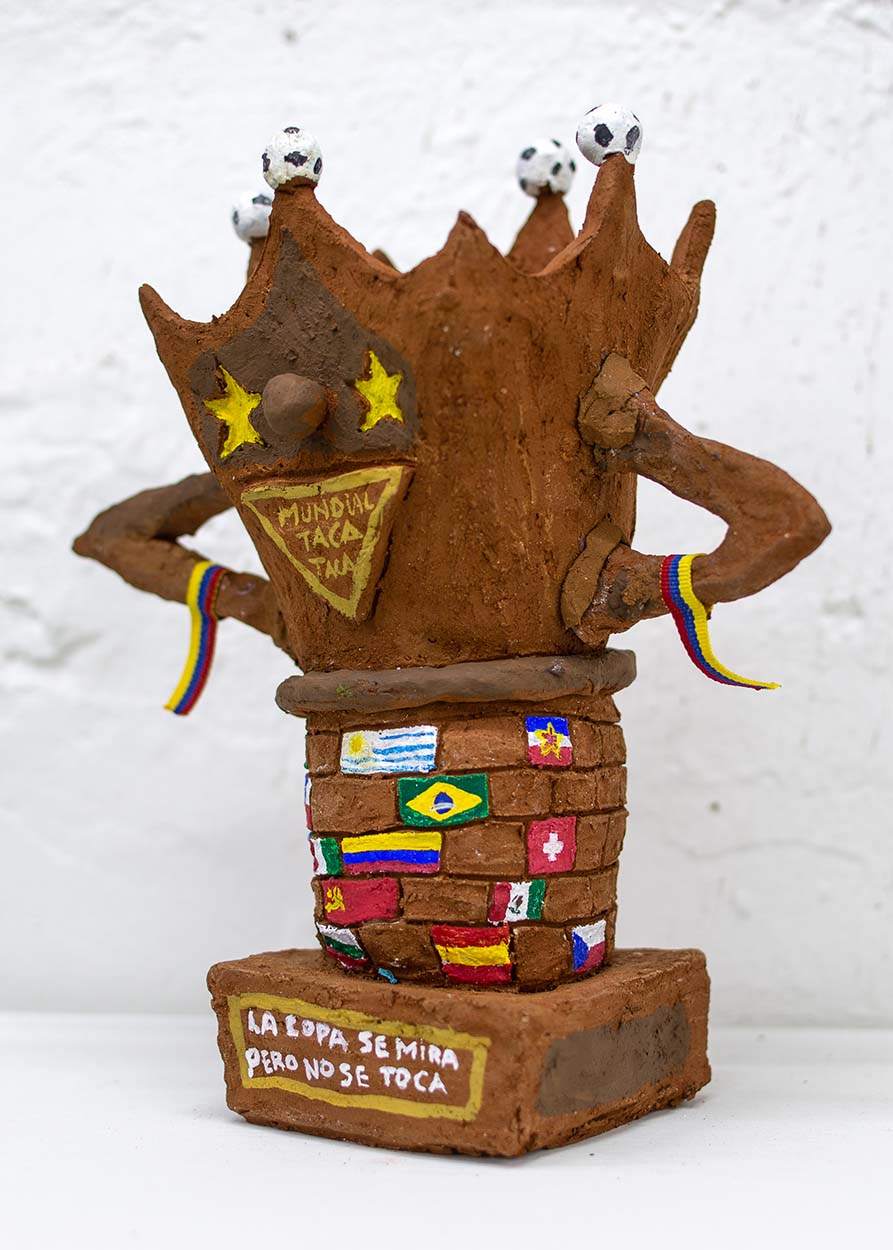
The present project started from a contextual horizon and with the desire to articulate two milestones related to the planet of soccer: the ongoing Qatar 2022 World Cup and the commemoration of the 60th anniversary of the 1962 World Cup, in which Chile hosted and achieved a historic third place. Following this desire, and as Carlos Caszely (another local soccer historic figure) once said, in his famous post-Descartesian phrase: I don’t have to agree with what I think; to which one could add, much less with what artists think, it was the fortunate case that the artist had the brilliant and funny idea of thinking in terms of a temporal relationship to soccer and celebrating a world cup of foosball, table soccer or mini soccer. Thus, a crossover of narratives and fictions took place that connected in a parodic way the event of the world cup and the small Foosball World Cup in our gallery (we finally had the honor of calling our space a gallery).
We were not yet seduced by the upcoming atmosphere of the king of sports, and we were already in the process of making the World Foosball Championship a reality. The artist challenged the space and transformed his operation into an installation of relational character. An operation that, with the deforming edge of humor and irony, becomes a lucid way of staging modes of absence in relation to the various soccer teams—past and present—that have not and would not have the opportunity to participate in the current World Cup competition. We already know the dialectic of this issue: from micropolitics to geopolitics, soccer always bursts in as a philosophy of history between oppressor and oppressed countries.
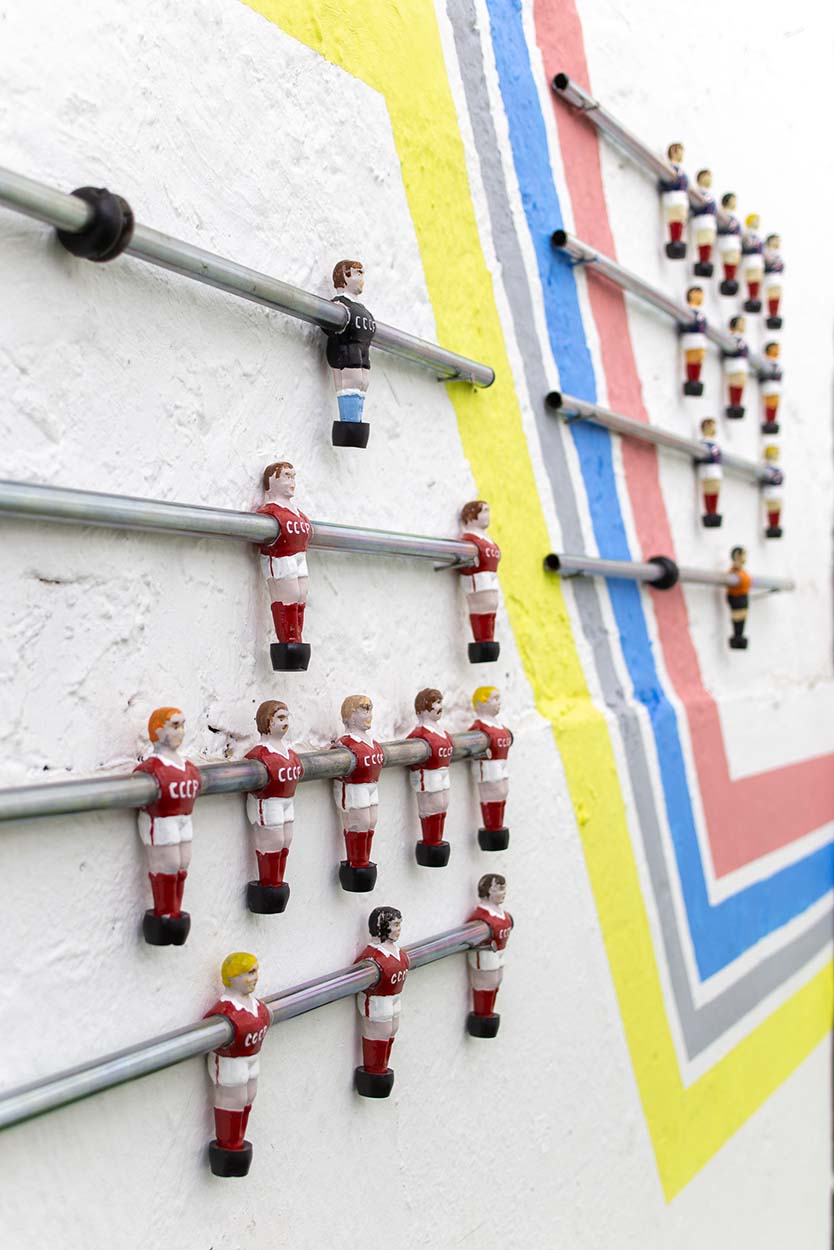
The strategy was to take advantage of the context and revive the 1962 championship, bringing together pairs of players who would represent each of the 16 countries that attended that World Cup. The initial group stage would be revived as well as the countries that participated and that no longer exist, such as the USSR, Yugoslavia and Czechoslovakia. Everything was going to happen again, but now inside the rectangular boxes of four foosball tables, which represent the four stadiums of the 62 World Cup.
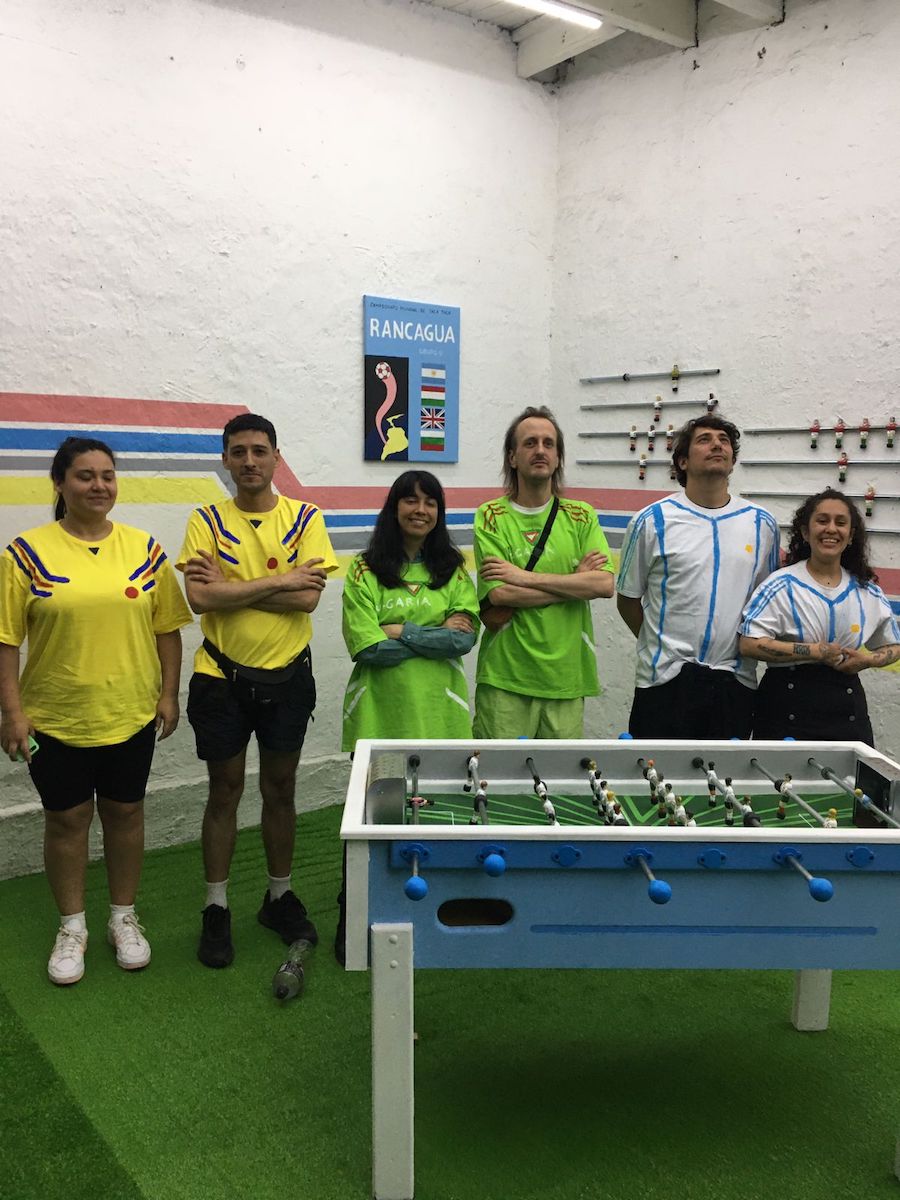
The the matches will follow the conditions established by the group stage, but the results will be those that mark the passion and talent of each foosball match (each match will be of two six-minute halves plus the extra time established by the referee). This gives meaning and a life of its own to the relational nature of the project, while at the same time opening up its own narrative and chain of triumphs and defeats. Enrique’s world championship will take place during the month of the current World Cup and will end on the same day as the final of the Qatar championship. In this juxtaposition and crossing of events, we would have the opportunity to see on December 18 a new soccer champion (something completely normal which happens every four years); but, for the first time, we will have the opportunity to see and celebrate a foosball champion (a unique phenomenon in history and, even more so, in the history of Latin American art). It was a fundamental part of the performative and participatory level of the work to be able to pick up this planetary parallelism and to mark its proportions—at the very least, a philosophy of foosball.
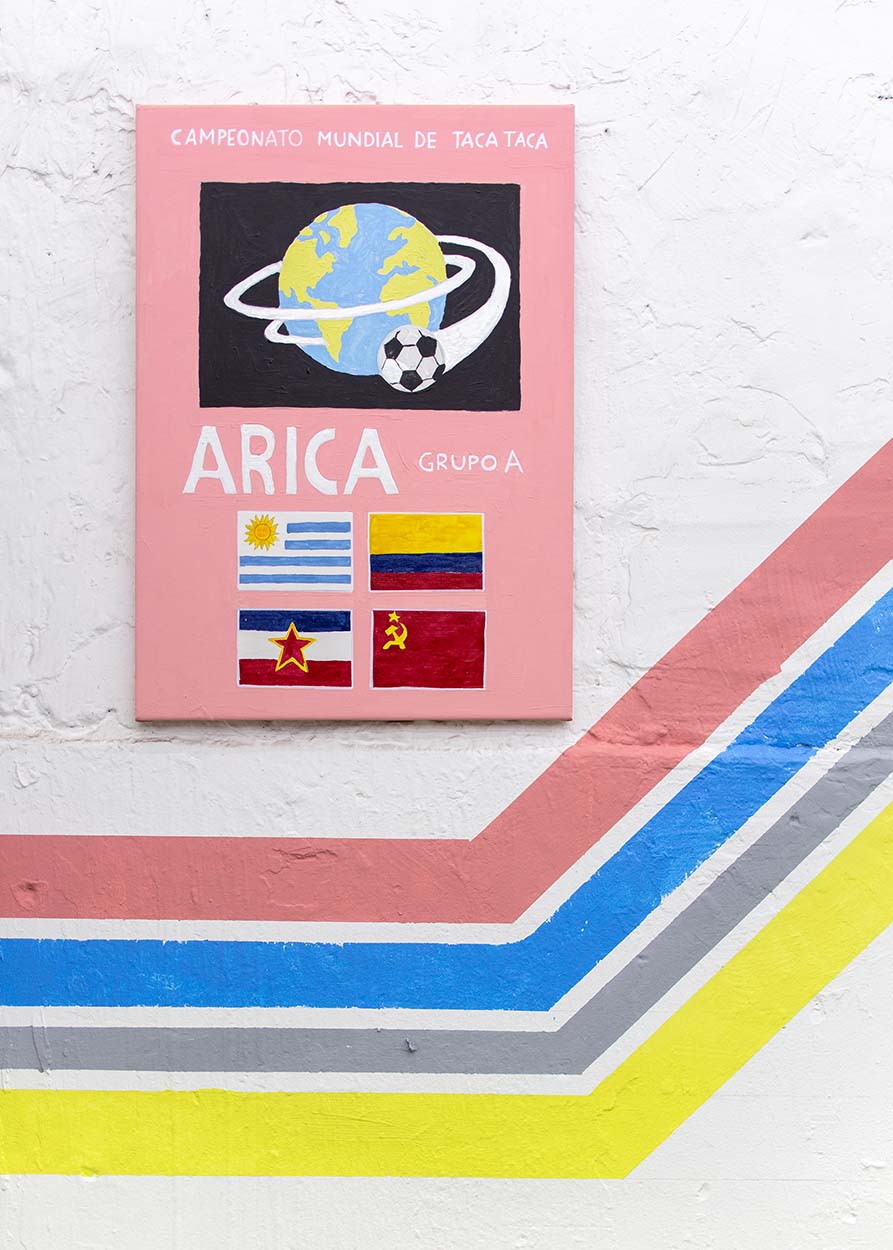
The key to this installation is that a new space was created with its own rules of use and participation, a space perfectly balanced between the functional and the decorative. The photographic record faithfully shows how the installation itself becomes an aesthetic world of its own, a mini-football social club for all types of fans. With a palette of pastel colors that can be appreciated in each game device and that, under a linear geometric design on the walls, allowed to give a more than atmospheric tone of the institutional character that the nature of this event should have. Enrique who, in his own relational exhibition, is also the arbiter of encounters, has played with disguises on a subjective, spatial and architectural level as no other artist has done in local art. We must not forget that this artist also holds the “national Guinness record” for the number of art spaces erected independently, collectively and self-managed. I try to find the associative measure of this sense of humor and intelligence, and I believe, without exaggerating, that this artist has conspired himself wiht an art that, being very Chilean in the imaginary of its referents, shares something totally non-Chilean. This non-Chilean factor of the aesthetic intelligence of Enrique Flores is simple: knowing how to have fun and enjoy art. The fact of collectivizing a spirit of play and lightness, makes me see here a profoundly Spinozian and Goldmanian (Emma Goldman) attitude, a form of sensibility so radical and singular, and not for that reason less political with respect to the dogmatic body of everything that is said to correspond to the so-called historical political art of this sad strip of land.
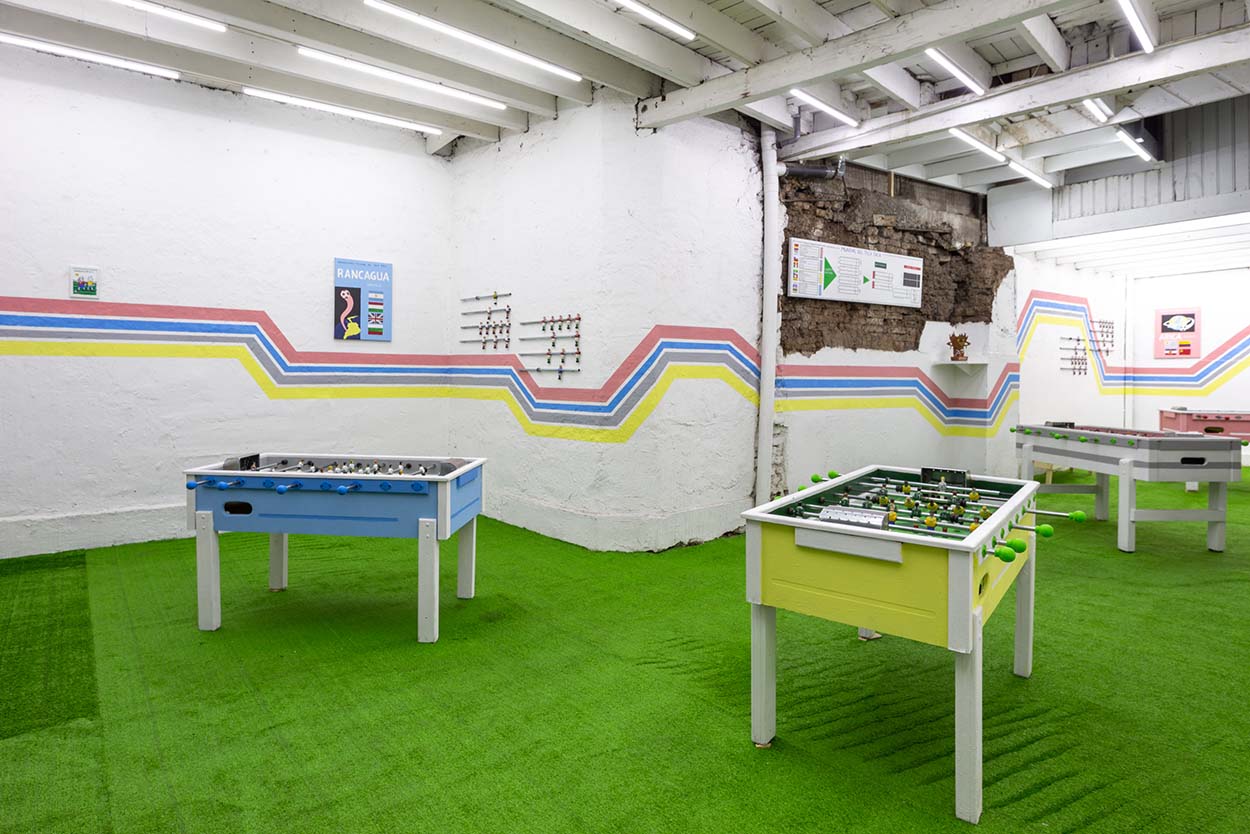
Enrique’s works and, especially, this project entitled Mundial [World Cup], do not appear as a mere critical commentary on itself, nor as a slogan of ideological agitation to look good with the tribune of experts in art and politics. The art of this performer goes beyond the epistemological reification of substance and the regular currency with which it has been staged. The always collective character of his processes configures a practice of playful communism that, at this stage of the game, has already made history and marked different periods of the artist’s production. Painting, performance and relational art, all this has been shaping a way of life in which art is offered as a condition of possibility of the common and popular. Enrique’s art is profoundly his own, pictorially identitarian on the outside and beautifully communist-libertarian on the inside. A work of humble resources but that work on the construction of popular worlds; moreover, they slightly open that world and expose the vital foundation of the political in art: to transform resistance into struggle and struggle into joy.
Perhaps the most powerful aspect of all this is that in his works the limits of inside and outside end up blurring. This is precisely because of the total dedication to the condition of processes with which each of Enrique’s artistic experiences operates. From this vital spirit of experimentation and transformation, the artist’s personal connection with the world is established, a connection that is the condition of possibility of every work. The works of this artist are also strategies for making new friends. They always show us the construction of a form of self-expression, a playful ethos of life that is freely open to all kinds of depersonalization and encounters of a subjective and presential order. That is why it is so important that art become personal; in fact, it always is, but only when we put ourselves back into play in the world of art, we become aware of such a way of touching the universal, the plan
Comments
There are no coments available.